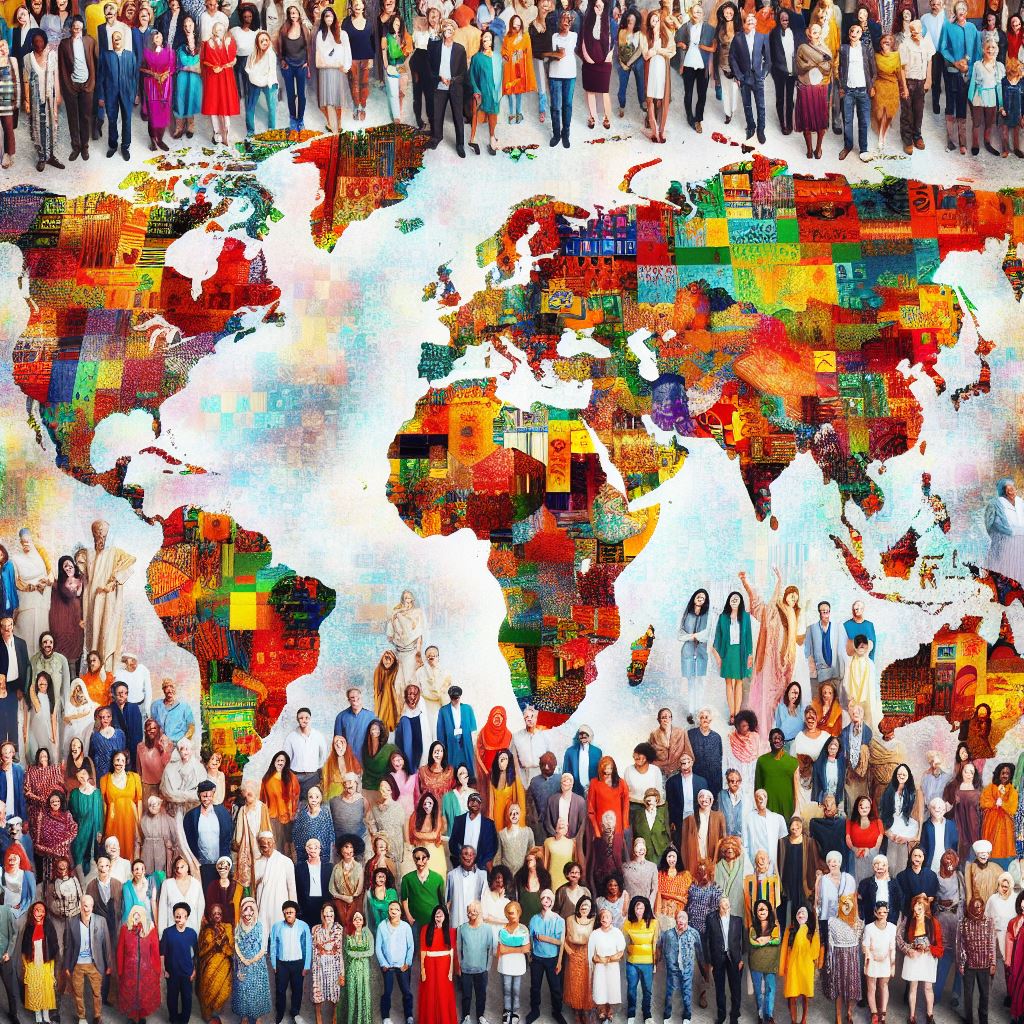Introduction to Global Demographics
The world’s population is more than just a statistic; it’s a tapestry of human existence that spans continents, cultures, and communities. In 2023, we’ve reached an unprecedented number of over 8 billion people. This growth is not uniform across the globe but is influenced by a myriad of factors that vary from one region to another.
Understanding Population Growth
Population growth is the increase in the number of individuals in a population. Global population growth rates are determined by births, deaths, and migration patterns. In 2023, the growth rate has been estimated at around 0.88%, indicating a steady rise in the number of people calling Earth their home.
Factors Influencing Population Dynamics
Several key factors influence population dynamics on a global scale:
- Fertility Rates: The average number of children a woman has during her lifetime.
- Mortality Rates: The frequency of deaths in a population.
- Migration: The movement of people from one place to another, which can significantly alter population distribution.
- Economic Development: Higher levels of economic development often correlate with lower fertility rates.
- Healthcare Access: Improved healthcare leads to lower mortality rates and can affect fertility through family planning services.
- Government Policies: Policies related to immigration, family planning, and healthcare can all influence population dynamics.
- Cultural Norms: Cultural attitudes towards family size and gender roles can impact fertility rates.
These factors combine in complex ways to shape the demographic landscape of our planet. By understanding them, we can better prepare for the future and address the challenges that come with a growing global population.
The Significance of Population Data
Population data isn’t just about counting heads; it’s the backbone of national and international planning and policy-making. It’s the crystal ball that helps predict future needs and challenges, guiding us towards sustainable development.
Economic Implications
When it comes to the economy, population data is like the pulse that economists keep their fingers on. It influences everything from the job market to housing, healthcare, and education. A growing population can mean a larger workforce, but it can also strain resources and infrastructure if not managed well.
Social and Environmental Impact
On the social front, population data sheds light on demographic shifts, aging populations, and urbanization trends, which have profound implications for social services and community planning. Environmentally, more people can mean more stress on natural resources, leading to pressing issues like climate change, habitat loss, and pollution.
Analyzing the Trends: 2023 and Beyond
As we gaze into the future, analyzing trends becomes a pivotal exercise in understanding where humanity is headed. The year 2023 has been a testament to the rapid advancements that shape our world and our understanding of it.
Technological Advancements in Data Collection
In the realm of data collection, technology has taken giant leaps. From AI-driven analytics to high-resolution satellite imagery, we’re now able to gather and interpret data with astonishing precision and depth. These tools not only provide us with real-time snapshots of our world but also empower us to make predictions with greater confidence.
Predictions and Projections
Speaking of predictions, demographers and data scientists have been busy making projections about the world’s population. They use complex models that take into account birth rates, death rates, immigration patterns, and even the impact of global events like pandemics. These projections help us prepare for the needs of future generations and ensure that we’re creating a world that can sustainably support a growing population.
Challenges and Opportunities
In the intricate dance of global demographics, 2023 presents both challenges and opportunities that could redefine our collective future.
Addressing Overpopulation
Overpopulation looms as a specter over the sustainability of our planet. It’s a challenge that calls for innovative solutions in resource management, urban planning, and environmental conservation. The key lies in balancing the needs of a growing population with the health of our ecosystems.
Harnessing Demographic Dividends
On the flip side, a burgeoning population offers untapped potential. The demographic dividend refers to the economic growth potential that arises from shifts in a population’s age structure. When a country has more workers than dependents, there’s a window of opportunity for rapid economic growth and societal development.
Conclusion: What Lies Ahead?
As we stand on the threshold of 2023, looking out at the vast expanse of humanity that stretches before us, we can’t help but wonder what the future holds. With over 8 billion hearts beating around the globe, each one carries a story, a dream, and the potential to shape tomorrow.
The world’s population is more than a number—it’s a mosaic of diverse cultures, ideas, and aspirations. As we navigate through the complexities of population growth, we must embrace both the challenges and the opportunities that come with it. We must strive for sustainable development that ensures the well-being of all individuals while preserving the planet for future generations.
In the end, the story of the world’s population is not just about the numbers. It’s about the collective journey of humanity, the decisions we make today, and the legacy we leave for those who will walk this Earth after us. It’s a story that we all write together, and it’s up to us to ensure that it’s one of hope, progress, and shared prosperity.
So, let’s look ahead with optimism and determination, ready to play our part in the grand narrative of the world’s population in 2023 and beyond.
FAQs:
What’s the current world population?
- The latest estimates put us at over 8 billion people worldwide.
How do we track population growth?
- Through a combination of census data, surveys, and advanced technology like satellite imagery.
Why is population data important?
- It helps plan for resources, services, and infrastructure to meet the needs of all citizens.
What challenges does population growth present?
- Issues like resource allocation, environmental sustainability, and social equity are at the forefront.
How can we address overpopulation?
- Through education, family planning, and policies that promote sustainable development.


